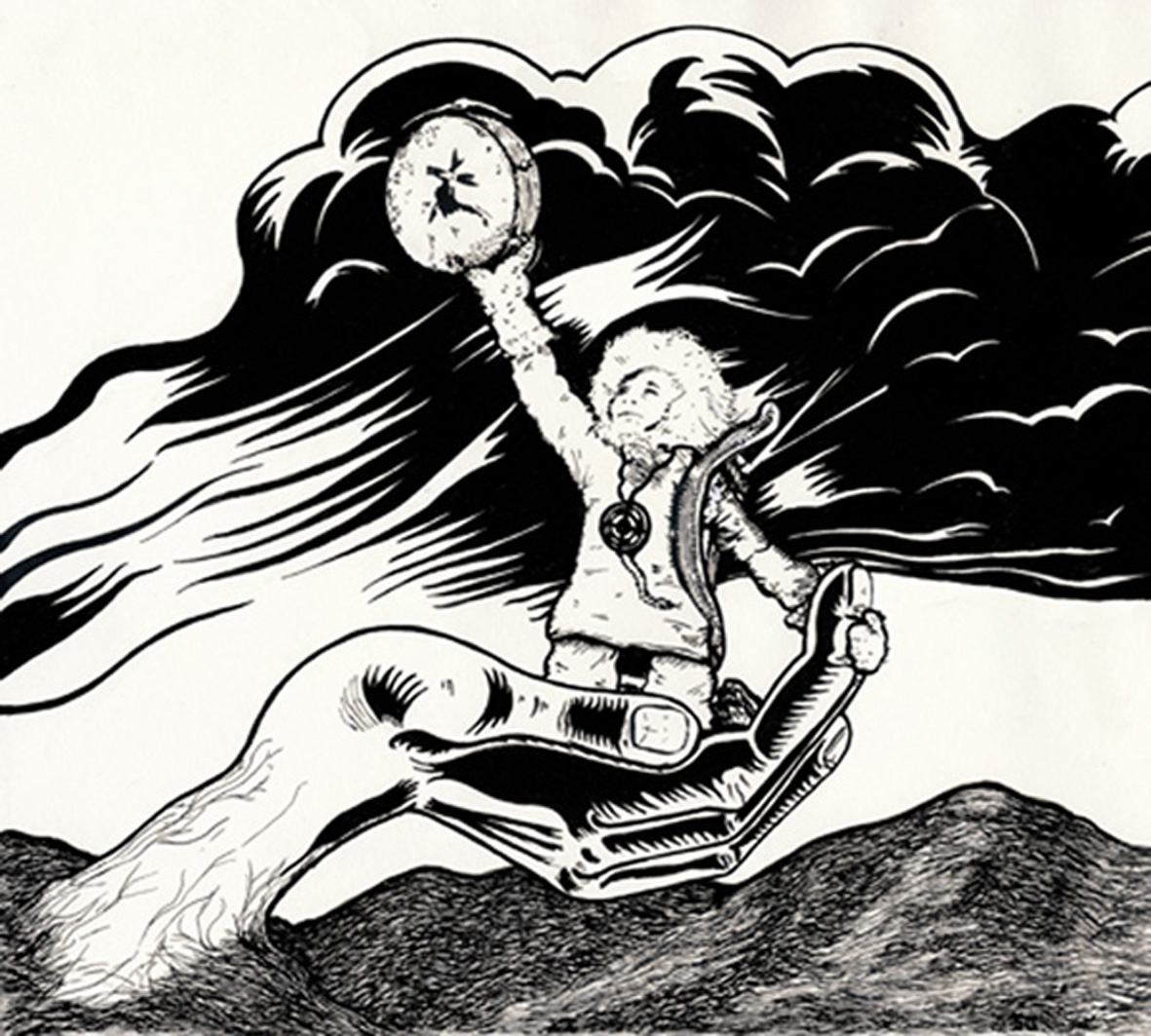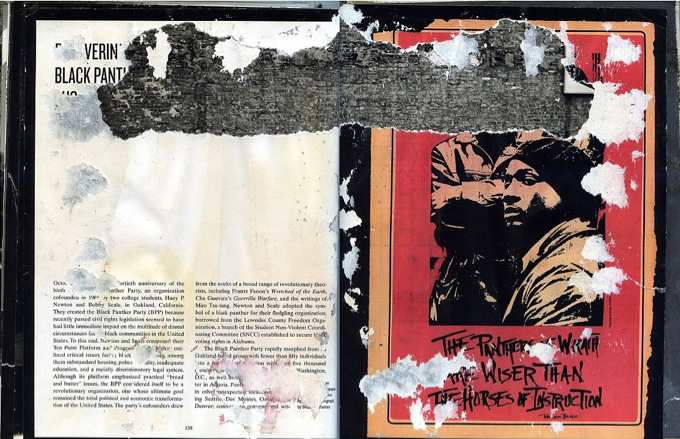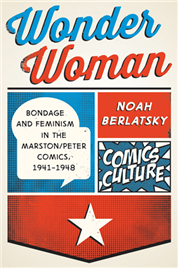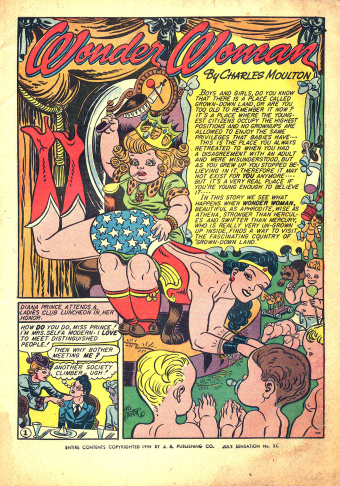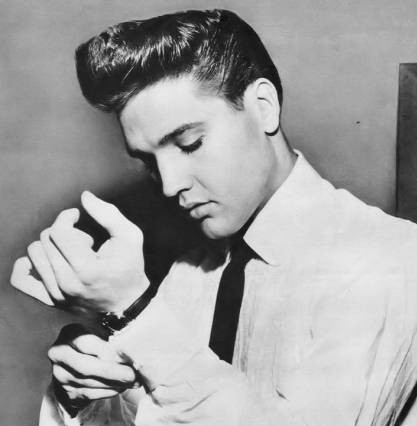This is part of a roundtable on The Best Band No One Has Ever Heard Of. The index to the roundtable is here.
___________
Don’t feel bad if you’ve never heard of French duo Natural Snow Buildings. In fact, a lot of people haven’t. Stylistically, their music isn’t what you’d call the most “popular”
of genres, but even for those whose musical tastes fall far from center, the band is still largely unknown, and your average modern music fan – of any genre – would likely be surprised at the lack of information available about them.
Sometimes tagged as “Experimental Psychedelic Folk,” “Psych-Drone,” “Experimental,” “Acid Folk”, etc, Natural Snow Buildings defy simple classification. I think it sounds like fire and alchemy, like the churning of bones and rocks and sinew. Many of their strongest pieces are deeply repetitive, trance–inducing, and visual in an organic, hallucinatory way. Sonically they use texture, noise, drone, and melody in an almost raga-like form, utilizing instruments like guitars, percussion, woodwinds, strings, and any number of other mysterious sound-making devices. Some pieces are largely instrumental – others use vocals front and center. Individual songs sometimes reach well past the 20–, 30–, even 40– minute mark, allowing each song to grow and expand, to gain density and substance until the apex is churning and spinning, opaque, frenzied. Other works are delicate, rippling, and infused with a childlike fragility. It’s like watching wild nature growing in slow motion, sometimes violently, sometimes so gently it seems to stretch on for an eternity.
Despite the band’s impressive creative output – almost 40 albums, EPs, limited edition cassettes, compilations, and CDs – the vastness of Natural Snow Buildings’ discography lies in stark contrast to what we know about them personally, which reveals nothing about their inner workings. Perhaps this is by design: when you can’t talk about the artist, there is only the work itself to consider. Both the story and the music of Natural Snow Buildings are quite mysterious; you are required to fill in the blanks and make it your own. While I wholeheartedly respect (and envy) their decision to keep matters private, admittedly I too would like to know more about them. As humans we are by nature curious about the things we like; we define ourselves in part by the choices we make and our understanding of how things work. In this case, the lack of information itself is intriguing and becomes the story, almost mythically so. In 2008, they made over ten albums. How can this be possible?
Of the band members, we do know a few facts: the project consists of two people, one male and one female, Mehdi Ameziane and Solange Gularte, respectively, both from France. They met in 1997 at university in Paris and began working together musically in 1998. In 2004 they relocated to Vitré (Brittany), in northwestern France, where they still live. In addition to working as a duo, both members have released solo works: Gularte’s under the name Isengrind; Mehdi’s under the moniker Twinsistermoon. The recordings are made at home, and their lo-fi nature further lends the sensation that we’re way beyond eras or earthly planes. Solange does the artwork for their releases, and her visions are as odd and gorgeous as the music itself, and a crucial part of each release. In earlier years, many of the releases were handmade and produced in very limited quantities (sometimes as few as fifteen copies), but over time the bands’ work has been reissued on established independent labels, helping bring their work to a somewhat larger audience.
2009’s triple LP “Shadow Kingdom” came out on the UK label Blackest Rainbow, and in 2013 Ba Da Bing reissued three records: the 2008 self-release, “Night Coercion Into the Company of Witches,” 2009’s “Daughter of Darkness,” and 2008’s “The Snowbringer Cult,” a 3X LP release which is in fact one solo record from each member, and one record as the duo. However, the bands’ most recent release – 2014’s “The Night Country” – is yet again a self-release.
In 2013, someone posted a large portion of the band’s music on YouTube for free (hopefully with the band’s approval). Here we can take our time exploring a large part of their catalog, as each album is provided in full with individual tracks indexed. The playlist starts with more recent releases and reaches back to 1999. Listening to it all can be a challenge, and sometimes exhausting. Some of the work is stronger than others, but that’s truly a matter of taste, as there’s a deep consistency in the music’s transformative and immersive nature.
We don’t know what makes these people tick, and why they choose to stay under the radar, but it doesn’t really matter. This is merely a personal feeling, but keeping to yourself helps your priorities remain intact, if making work on your own terms is more important than working towards a traditional, “successful” career. If an artist is released from the task of promoting their career, they have bypassed many of the distractions that damage focus, which runs the risk that the work (in quality, content, and output) may suffer. I truly don’t know if this is what’s behind the band’s ideals, but if this idea figures in at all, it’d make sense. These days, a great many independent artists spend a large part of their time on DIY efforts (via PR, social media, touring) to help expand awareness about their work, and increasingly less time on creating the music which inspired them in the first place.
Why do we want to know more and more about the people and the details when we love their work? Does it bring us closer to them, or is it a fluke, a mirage? We all face a lot of distractions in our daily lives, so let’s take pause. Sometimes, enjoying something in its purest form seems to be more than enough.

